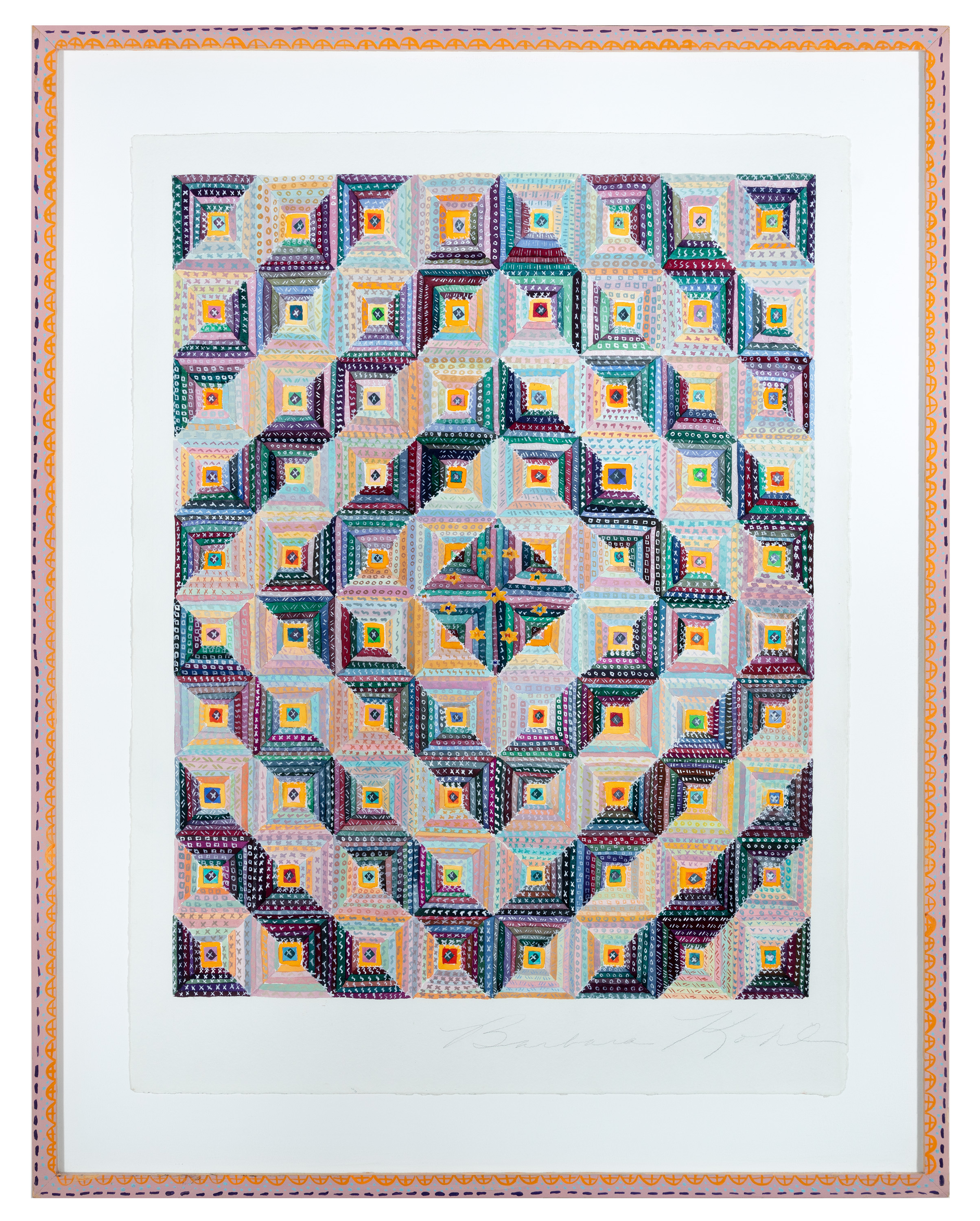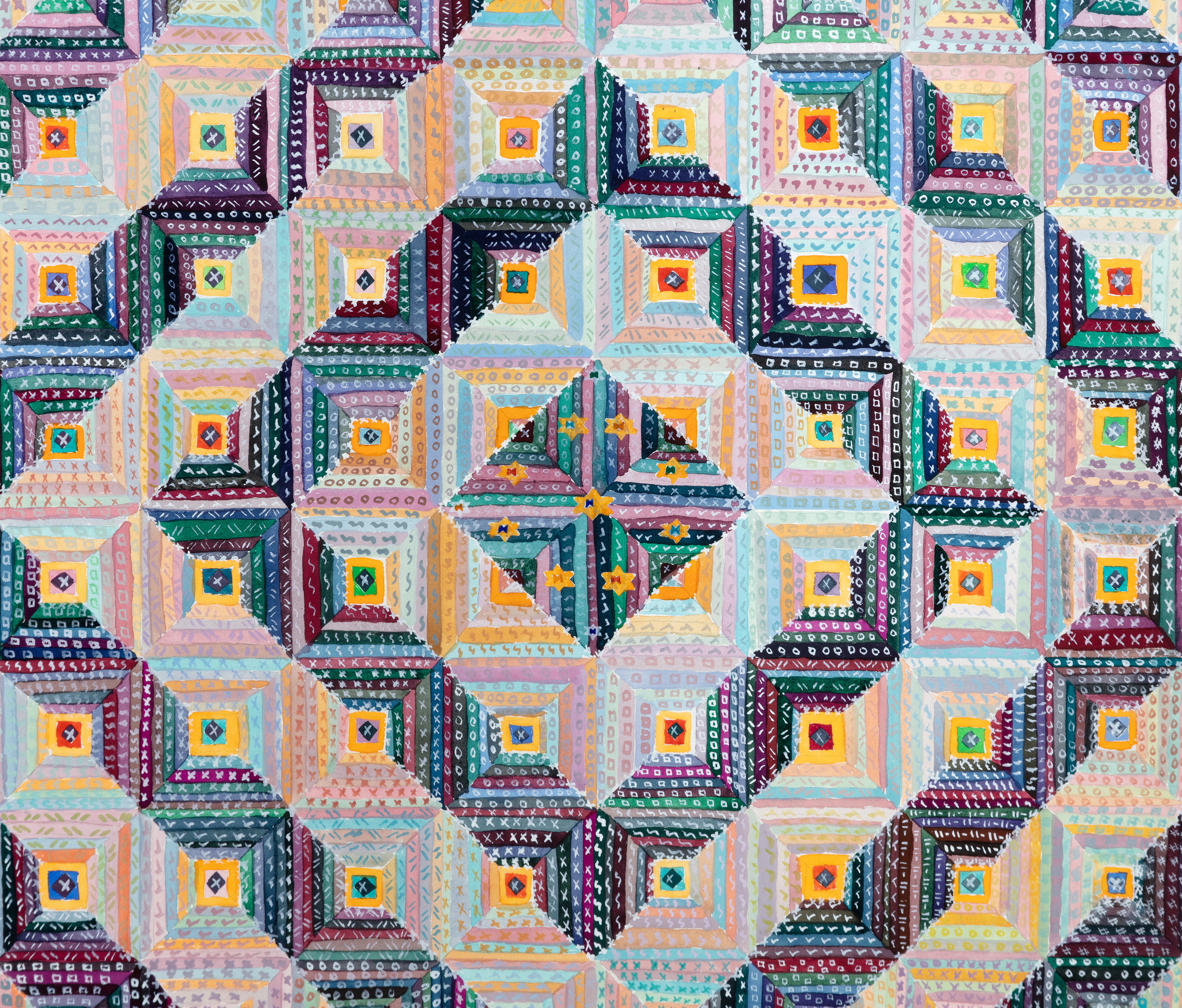Log Cabin Humble Beginnings
Barbara Kohl-Spiro
Log Cabin Humble Beginnings
Artist:
Barbara Kohl-Spiro
Medium: Painting
Price:
$4,700.00
Gallery:
David Barnett Gallery
Add to Favorites
Details
Creation Date: 1984
Materials: Watercolor
Dimensions: 36" x 28"
Condition: Good overall condition. Some minor abrasions to frame.
Finish: Framed
About the Item
Barbara Kohl-Spiro's watercolor, Log Cabin Humble Beginnings, from 1984 comes from a series of paintings based on quilt designs. This example depicts the log cabin pattern. Influenced by Op Art of the 1960s, Kohl-Spiro's work fools the eye with pulsating diamond and square patterns made up of lines and dots of color that are not blended. The work distorts the viewer's perception of depth and form. The color palette is influenced by the Italian Memphis design style that was popular in the 1980s. While both Op Art and Memphis design have characteristic hard lines, Kohl-Spiro's painting emphasizes the handmade--much like a textile. Even the picture's frame is handmade. During the '80s, curators and critics were beginning to recognize the artistry and decorative nature of quilts. For Kohl-Spiro, the quilt represents a symbol of passing traditions from mother to daughter and the strength of familial relationships across generations. The artist signed this piece in the lower right margin with graphite. In addition, this painting is housed in a frame of the artist's design, painted with patterns of lavender, orange, maroon, teal, and purple. Good overall condition. Some minor abrasions to frame.
Image Size: 25 1/2" x 19 3/4"
Paper Size: 29 3/4" x 22"
Frame Size: 36 3/8" x 28 3/8"
Image Size: 25 1/2" x 19 3/4"
Paper Size: 29 3/4" x 22"
Frame Size: 36 3/8" x 28 3/8"
About the Artist
Barbara Kohl-Spiro
Barbara Kohl-Spiro was born in 1941 and was largely influenced by the 1960s. In the art sphere, a multitude of significant changes were also taking place. Pop Art and Minimalism were ascendant. The watercolor, "Log Cabin Humble Beginnings," from 1984, comes from a series of paintings based on quilt designs. This example depicts a log cabin pattern. Influenced by Op Art of the 1960s, Kohl-Spiro's work fools the eye with pulsating diamond and square patterns made up of lines and dots of color that are not blended. The work distorts the viewer's perception of depth and form. The color palette is influenced by the Italian Memphis design style that was popular in the 1980s. While both Op art and Memphis design have characteristic hard lines, Kohl-Spiro's painting emphasizes the handmade--much like a textile. Even the picture's frame is handmade. During the '80s, curators and critics were beginning to recognize the artistry and decorative nature of quilts. For Kohl-Spiro, the quilt represents a symbol of passing traditions from mother to daughter and the strength of familial relationships across generations.
About the Gallery
David Barnett Gallery
The David Barnett Gallery is Wisconsin's premier gallery with the broadest range of art available in the region, including works of art that represent more than 600 artists. The gallery specializes in European and American masters, regional and nationally recognized artists and emerging artists. This gallery also offers museum quality custom framing, restoration, conservation, appraisals, printing, transportation and delivery.
Similar Artworks
Similar Artists
More from this Seller










 Facebook
Facebook
 X
X
 Email
Email
























